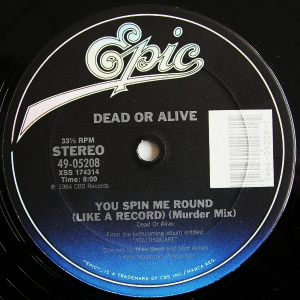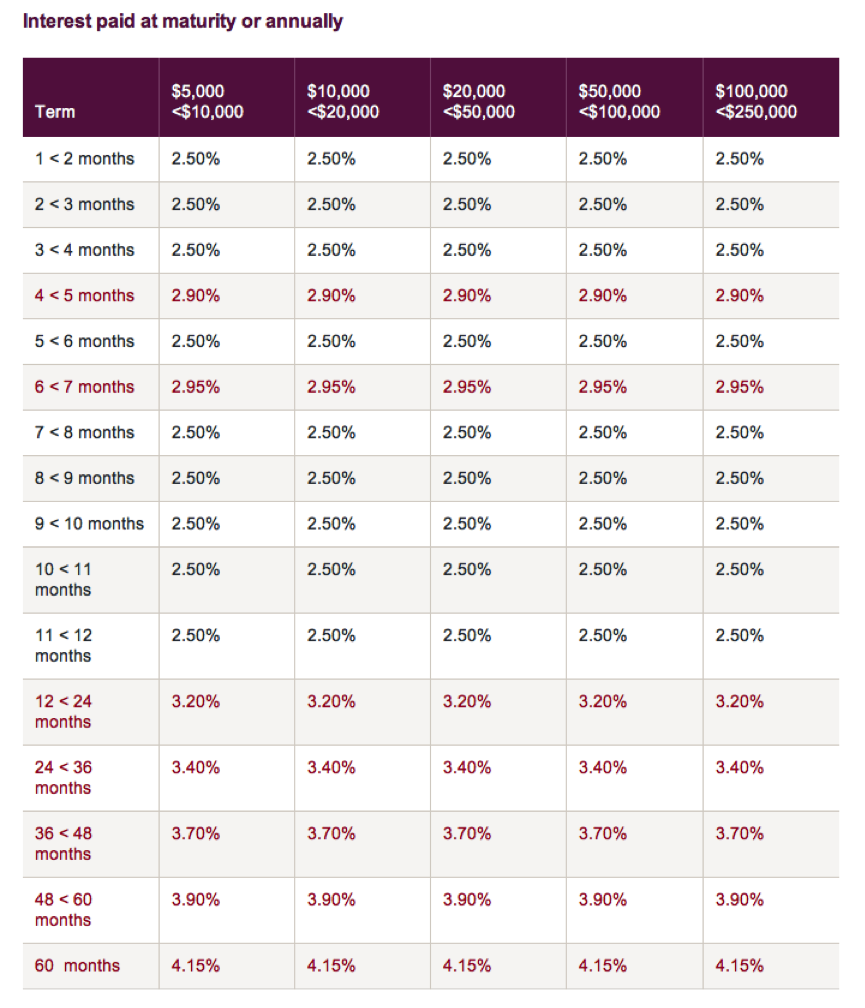
Bubble Watch #16: Risk Corruption
Nearly five years ago – in January 2010 – the five-year bank bill swap rate was 5.915 per cent. Westpac was offering five-year term deposits at 8 per cent for sums from $5,000 to $5 million with interest paid annually. The Commonwealth Bank and the NAB were paying 6.75 per cent for sums up to $500,000, while Bankwest offered 7.1 per cent.
By comparison, Commonwealth PERLS, which were (and are) pitched to the same term-depositor audience, offered a lower return and less security.
Five years on and it’s a very different story. As the table below reveals, Westpac is offering term deposit rates between 2.50 per cent and 4.15 per cent depending on the term and the borrowed amount.
However, all is apparently not lost. Higher rates are available, and you may be tempted, if you are prepared to move up the risk spectrum. But how far up that spectrum should you go?
Many investors consider bonds to be safe, but there are genuine risks through which mountains of money have been lost before. One risk is represented by the inverse relationship between yield and price. If, after buying a bond, interest rates generally rise, then the rate a future buyer of your bond will want is going to be higher. In order to achieve that higher return – given the rate the issuing company pays the holder of the bond doesn’t change – the price of the bond must fall. Of course, that risk isn’t relevant for the bond purchaser who intends to hold until maturity, but a lower return than might otherwise be available elsewhere will ensue for the reminder of the bond’s term.
There is, however, another risk for the investor who holds to maturity. That risk is the possibility of the issuer defaulting. The smaller the company, the less experienced the management, the more aggressively it is seeking to grow revenue or profits (if there are any), whether or not it sells a product or service with enduring competitive advantages will all have a bearing on the issuing company’s ability to pay.
It’s worth looking more closely at the crop of bonds that are being marketed to investors seeking a better return, than those offered by the term deposits backed by the security of the Westpac name.
The first cab off the rank is the listed company Cash Converters (ASX: CCV), with a market capitalisation of $458 million. It has a bond on issue maturing in September 2018, with a yield to maturity (the overall return if you hold until maturity) of 6.38 per cent and a running yield (the income paid annually expressed as a percentage of the market price) of 7.55 per cent.
Qantas (ASX: QAN) is a business that requires no introduction from us – you know what we think of airlines – and it has on issue an April 2020 bond with a yield to maturity of 6.52 per cent and running yield of 6.51 per cent.
Finally, G8 Education (ASX: GEM) a childcare centre acquirer whose shares we decided, some time ago, no longer met our quality criteria, has on issue an August 2019 bond with a yield to maturity of 6.27 per cent and running yield of 7.24 per cent.
It’s tempting to think that a yield of circa 6.5 per cent offered by these companies is attractive, especially when compared with the miserable rates currently available on term deposits. But, by way of example, the GEM bond is offering a yield to maturity that is just 2.12 per cent higher than the 60-month term deposit offered by Westpac.
Perhaps temptation to move up the risk spectrum can itself be tempered by the reminder that these issuers are no Westpacs; and that Westpac was itself offering 8 per cent only five years ago.
And if term deposit rates were 8 per cent only five years ago, they can be 8 per cent again in another five years. Now decide whether your sense of risk has been corrupted by low interest rates.

Paul Muscroft
:
One lesson from this is looking at what rate we can lock in a mortgage. In 5 years time we may be looking back to 2014 and thinking boy I could have locked in 5.19% for 5 years (Westpac’s current offering)…..
Yilmaz
:
Great comparison Roger. There is no doubt low interest rates have corrupted people’s methods of managing risks, Just as they have corrupted people’s valuation methods. Recipe for disaster.
Andy Dong
:
Roger, I’ve been wanting to get your perspective on medibank IPO. Will any of Montgomery managed fund participate in the IPO?
Roger Montgomery
:
We would like to. Whether we do or not and at what price will ultimately be up to the Federal Government.
David Michie
:
I remember those 8% term deposits well and thought seriously about it at the time. What I’d do for an 5% term deposit today!